 W
WAbsent in the Spring is a novel written by Agatha Christie and first published in the UK by Collins in August 1944 and in the US by Farrar & Rinehart later in the same year. It was the third of six novels Christie wrote under the nom-de-plume Mary Westmacott.
 W
WThe Ballad and the Source is a novel by Rosamond Lehmann, first published in 1944 by Collins in the UK. Set in Edwardian England, the book deals with the relationship between Rebecca, a young girl, and Sibyl Jardine, a complicated and domineering elderly woman.
 W
WBrendon Chase is a children's novel by Denys Watkins-Pitchford, writing as 'BB'. It was published in 1944 but is set at an earlier date. The novel is about three boys living wild in an English forest. It was later made into a 13-part TV serial and shown on ITV from 31 December 1980 to 25 March 1981. The series was also shown in many other European countries and in the United States.
 W
WThe Case of the Gilded Fly is a locked-room mystery by the English author Edmund Crispin, written while Crispin was an undergraduate at Oxford and first published in the UK in 1944. It was published in the US a year later under the title Obsequies at Oxford.
 W
WClaudine at St. Clare's is the fifth novel in the St. Clare's series by Enid Blyton. The narrative follows the O'Sullivan twins, Patricia and Isabel, and their adventures at exclusive boarding school St Clare's. The book introduces four new characters: Claudine, the French mistress' niece; Eileen, whose mother joins the school as matron; Pauline, a wannabe rich girl; and Angela, a rich and spoiled society girl.
 W
WCluny Brown is a humorous coming of age novel by Margery Sharp, published in August 1944 by Collins in the UK and Little Brown in the US.
 W
WCurtain Up is a children's novel about a theatrical family by British author Noel Streatfeild. It was first published in 1944. To remind potential readers of Streatfeild's highly successful first novel, Ballet Shoes, it is often retitled Theatre Shoes, or Theater Shoes in the US. A number of Streatfeild's children's novels have undergone similar retitling.
 W
WDeath Comes as the End is a historical mystery novel by Agatha Christie, first published in the US by Dodd, Mead and Company in October 1944 and in the UK by the Collins Crime Club in March of the following year. The US Edition retailed at $2.00 and the UK edition at seven shillings and sixpence (7/6).
 W
WFair Stood the Wind for France is a novel written by English author H. E. Bates. The novel was first published in 1944 and was Bates's first financial success. The title comes from the first line of "Agincourt", a poem by Michael Drayton (1563–1631).
 W
WFive Run Away Together is the third book in the Famous Five series by the British author Enid Blyton.
 W
WFriday's Child is a novel written by Georgette Heyer in 1944. It is generally considered one of Miss Heyer's best Regency romances, and was reportedly the favourite of the author herself. Heyer retained only a single fan letter, which was from a Romanian political prisoner who kept herself and her fellow prisoners sane for twelve years by telling and retelling the plot of Friday's Child.
 W
WGreen Dolphin Street is a novel by Elizabeth Goudge, first published by the Hodder & Stoughton in 1944. The novel was adapted to cinema in 1947.
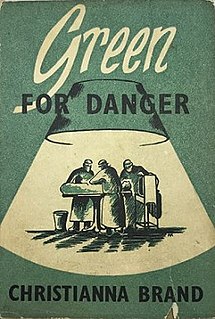 W
WGreen for Danger is a popular 1944 detective novel by Christianna Brand, praised for its clever plot, interesting characters, and wartime hospital setting. It was made into a 1946 film which is regarded by film historians as one of the greatest screen adaptations of a Golden Age mystery novel.
 W
WThe Green Isle of the Great Deep is a 1944 dystopian novel by Neil M. Gunn. Whilst the book features two protagonists from his previous novel, Young Art and Old Hector, Gunn transports the characters into an allegory about totalitarianism and the nature of freedom and legend.
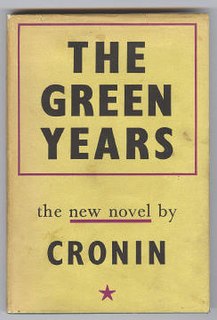 W
WThe Green Years is a 1944 novel by A. J. Cronin which traces the formative years of an Irish orphan, Robert Shannon, who is sent to live with his draconian maternal grandparents in Scotland. An introspective child, Robert forms an attachment to his roguish great-grandfather, who draws the youngster out of his shell with his raucous ways. The Green Years dominated The New York Times Fiction Best Sellers of 1945 for 17 weeks.
 W
WHard Facts is a 1944 novel by the British writer Howard Spring. A young curate is sent to work in Manchester, where he encounters the Dunkersly family who own a struggling printing firm. It was followed by a sequel Dunkerley's in 1946.
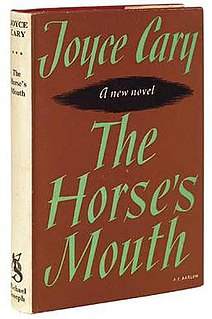 W
WThe Horse's Mouth is a 1944 novel by Anglo-Irish writer Joyce Cary, the third in his First Trilogy, whose first two books are Herself Surprised (1941) and To Be A Pilgrim (1942). The Horse's Mouth follows the adventures of Gulley Jimson, an artist who would exploit his friends and acquaintances to earn money, told from his point of view, just as the other books in the First Trilogy tell events from their central characters' different points of view. Cary's novel also uses Gulley's unique perspective to comment on the social and political events of the time.
 W
WThe Island of Adventure is a popular children's book by Enid Blyton. It is the first book in the Adventure Series. The first edition was illustrated by Stuart Tresilian.
 W
WKing in Prussia is a 1944 historical novel by the Italian-born British writer Rafael Sabatini. It portrays the formative years of Frederick the Great, who ruled Prussia during the eighteenth century. It was released in the United States under the alternative title The Birth of Mischief.
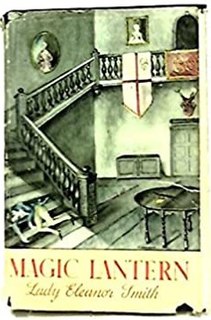 W
WMagic Lantern is a 1944 historical novel by Lady Eleanor Smith, her final novel before her death the next year. In it a Devon squire marries an attractive gypsy girl with whom he has a son, he in turn becomes besotted with a gypsy woman on the moors.
 W
WThe Mystery of the Disappearing Cat (1944) is the second in the Five Find-Outers series of children's mystery novels by Enid Blyton. It was published by Methuen and Co Ltd and follows the first book in the series, The Mystery of the Burnt Cottage. It tells of a stolen cat the group of children work to uncover.
 W
WPastoral is a novel by the English author Nevil Shute. It was first published in 1944 by Heinemann. Its theme is that even in the midst of war, and among warriors, everyday life, such as romance, will continue.
 W
WThe Razor's Edge is a 1944 novel by W. Somerset Maugham. It tells the story of Larry Darrell, an American pilot traumatized by his experiences in World War I, who sets off in search of some transcendent meaning in his life. The story begins through the eyes of Larry's friends and acquaintances as they witness his personality change after the War. His rejection of conventional life and search for meaningful experience allows him to thrive while the more materialistic characters suffer reversals of fortune.
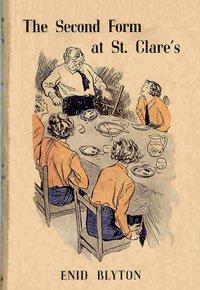 W
WThe Second Form at St. Clares is the fourth novel in the St. Clare's series of children's school stories by Enid Blyton. The series is about the boarding school adventures of twin girls Patricia and Isabel O'Sullivan. Their form mistress is now Miss Jenks and they no longer have to bear the severeness of the first form mistress, Miss Roberts – who is extremely sarcastic and firm but can be kind when she feels like to, a bit like Mam'zelle, the French teacher that used to teach and is still teaching the girls.
 W
WShadow of Doctor Syn is the seventh and last in the series of Doctor Syn novels by Russell Thorndike. This story is set during the events of the French Revolution and part of the action has Syn rescuing people from the Reign of Terror in the style of the Scarlet Pimpernel. The other main plot element is a love story. Syn has fallen in love with young Cicily Cobtree and hopes his actions against Robespierre will earn him a pardon from the King. When Cicily dies, Syn gives up his ideas of pardon and nearly loses his sanity. This sets the stage for the fiendish character he becomes in Doctor Syn: A Tale of the Romney Marsh.
 W
WSirius is a 1944 science fiction novel by the British philosopher and author Olaf Stapledon, whose title character is a dog named Sirius with humanlike intelligence. A sense of existential questioning suffuses the book, as the author delves into aspects of Sirius's psyche. The novel deals with many human issues through Sirius and his experiences, his unusual nature, his ideas and his relationships with humans. The characters go to great lengths to prevent Sirius from becoming a circus-type wonderdog, and instead, they seek to develop Sirius's character much like a family would create and foster that of a human child.
 W
WTime Must Have A Stop is a novel by Aldous Huxley, first published in 1944 by Chatto and Windus. It follows the story of Sebastian Barnack, a young poet, who holidays with his hedonistic uncle in Florence. Many of the philosophical themes discussed in the novel are explored further in Huxley's 1945 work, The Perennial Philosophy.
 W
WTowards Zero is a work of detective fiction by Agatha Christie first published in the US by Dodd, Mead and Company in June 1944, and in the UK by the Collins Crime Club in July of the same year. The first US edition of the novel retailed at $2.00 and the UK edition at seven shillings and sixpence (7/6).
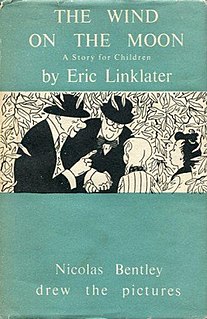 W
WThe Wind on the Moon: A story for children is a fantasy novel by Eric Linklater, published by Macmillan in 1944 with illustrations by Nicholas Bentley. The American division Macmillan US published an edition in the same year. Opening in the fictitious village of Midmeddlecum, evidently in contemporary rural England, it features two girls whose father is absent during a war. They pursue magical, bizarre, or dangerous experiences. A "wind on the moon" is said to be the cause, "making them behave badly for a year".